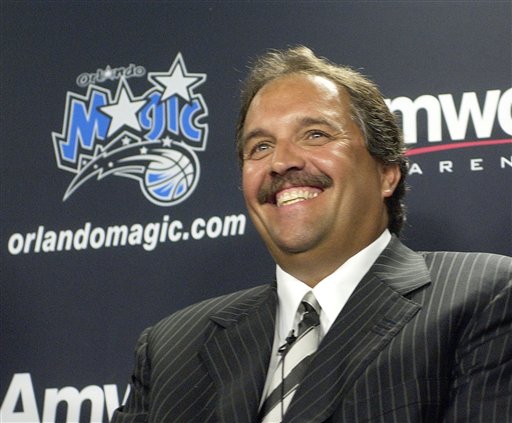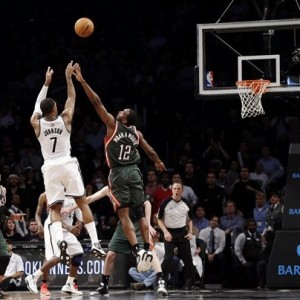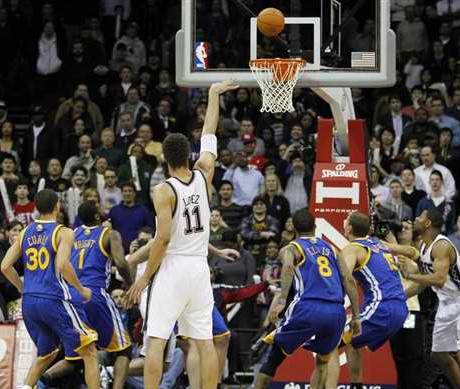Before Brent Barry and Vince Carter tried to take off from the free throw line, the Doctor had already paved the way (by the way, we might as well start calling that dunk “The Doc”).
Before Michael took off from inside the lane and then switched the ball to his left hand for a scoop shot in the 1991 Finals against the Lakers, Julius had rocked the cradle on Michael Cooper in the 1983 Finals (as a 76ers player).
Erving was a pioneer, but he was also a winner. After leading the Nets to the 1974 ABA title, New York faltered in the first round the following season. Undeterred by the early exit, the New York Nets made it back to the ABA Finals in 1976 and won the last championship game the league ever played.
When the playoffs ended, the playoffs, the NBA had a deal in place for a merger to take place between both leagues. Erving was a member of the New York Nets, and although the NBA did not want the Nets to join their league, they wanted…check that, needed Erving there.
He was the antithesis of everything that was wrong with the NBA. He played hard, stayed out of trouble, was gracious, and did not take drugs. He even once signed an autograph for a fan while heading out to the warm-up line before the start of a game. The league was hoping that Erving would do for them what he had already done for the ABA: make fans relate to the players and care enough to come watch them.
With that, the Denver Nuggets, San Antonio Spurs, Indiana Pacers and New York Nets joined the National Basketball Association as part of the NBA-ABA merger.
All seemed well for the Nets franchise. Then, money talked. Loudly. During a contract renegotiation, Erving channeled his inner Jay-Z and deservedly said “f— you, pay me.” The Nets took a hardline stance on the matter, but also had some difficulties paying the fees required to join the NBA. Consequently, they had to sell Erving to the highest bidder in order to keep the franchise afloat.
Dr. J. took his talents to Philadelphia (admit it, it’s not the same as South Beach) and never looked back. Yet, he still put the team on the map. If not for Erving, the New Jersey Nets as we know them today might not exist. The legendary showman helped the team join the “big boys league,” thanks to his contribution to their winning ways and his jaw-dropping play.
The Doc might have left the team for Philly, but he also left his name in several places in the Nets record books (rank in franchise history indicated in parentheses):
- 26.8 PER (1st)
- 7,104 points (6th)
- 2,777 field goals made (5th)
- 5,464 field goals attempted (8th)
- 50.8% field goal percentage (6th)
- 1,470 free throws made (6th)
- 1,863 free throws attempted (6th)
- 884 offensive rebounds (7th)
- 1,854 defensive rebounds (7th)
- 2,738 total rebounds (8th)
- 583 steals (7th)
- 521 blocks (5th)
- 949 turnovers (9th)
- 39.9 minutes per game (2nd)
- 28.2 points per game (2nd)
- 10.9 rebounds per game (5th)
- 2.3 steals per game (4th)
- 2.1 blocks per game (4th)
In his three seasons with the Nets, Erving captured the ABA MVP trophy in all three years.
In the book The Rise and Rise of Julius Erving, Vincent Mallozzi makes the point that Erving holds the distinctive honor of being the only professional basketball player to ever save both the ABA and the NBA. Erving both made the tri-colored ball a common occurrence to basketball fanatics and restored the faith of the fans in time for Magic Johnson and Larry Bird.
Those facts as well as Erving’s productivity on the court led to Bill Simmons putting Erving in the top 20 of his pyramid of greatest basketball players in The Book of Basketball. Ask anyone from the old guard about Erving and you are bound to see a player melt, or at the very least, smile. That’s what Erving does to everybody.
Here we are, 35 years later. Despite playing only three years with the franchise, the Doctor is still the best Net to ever have taken the court, and its most important one.
Thanks, Doc.


















